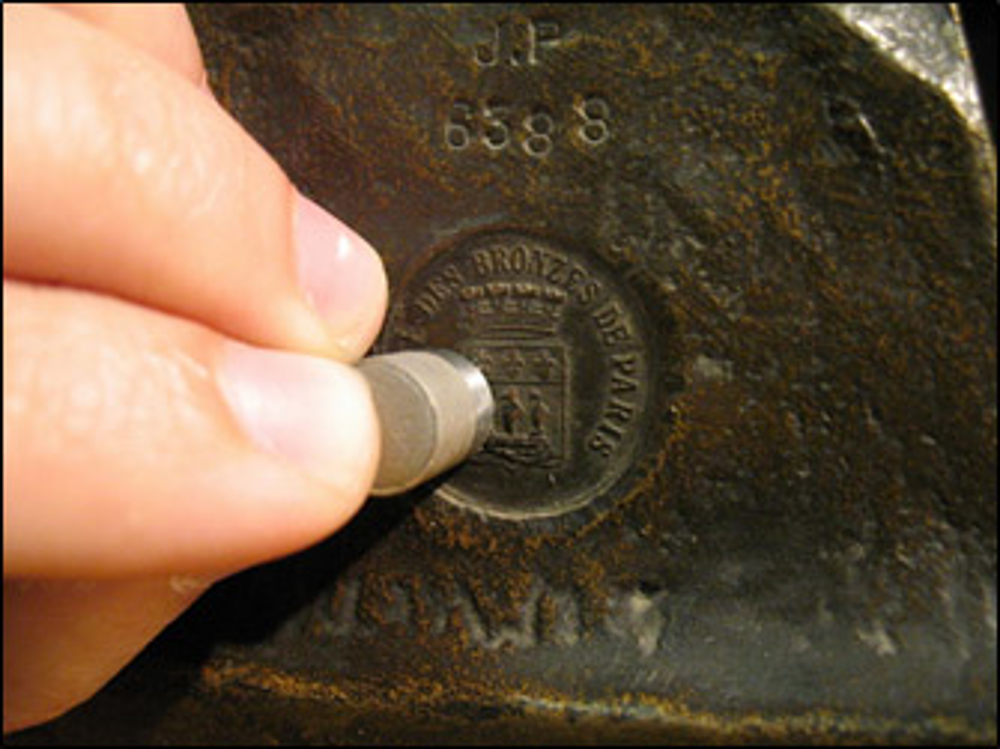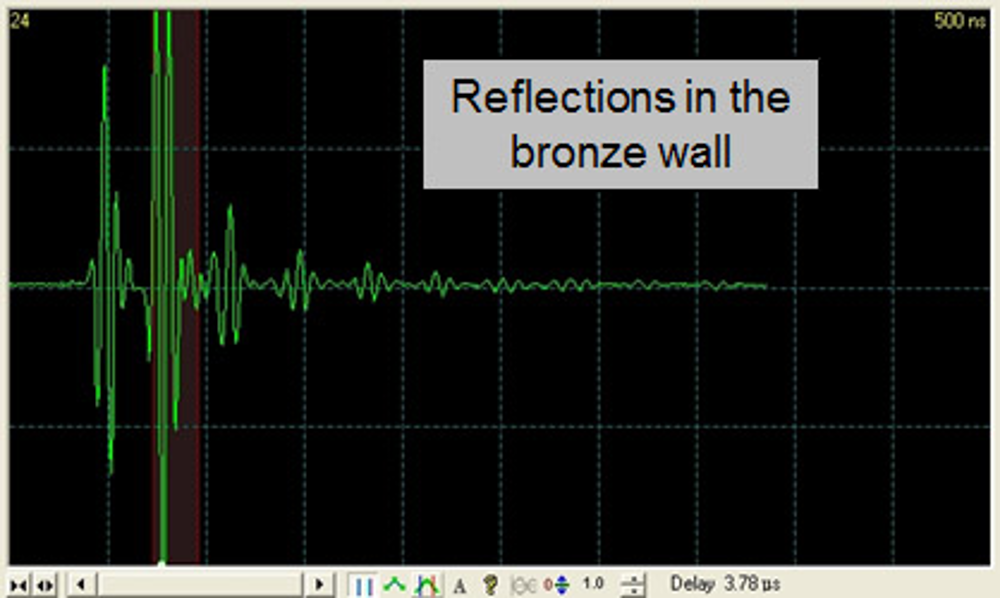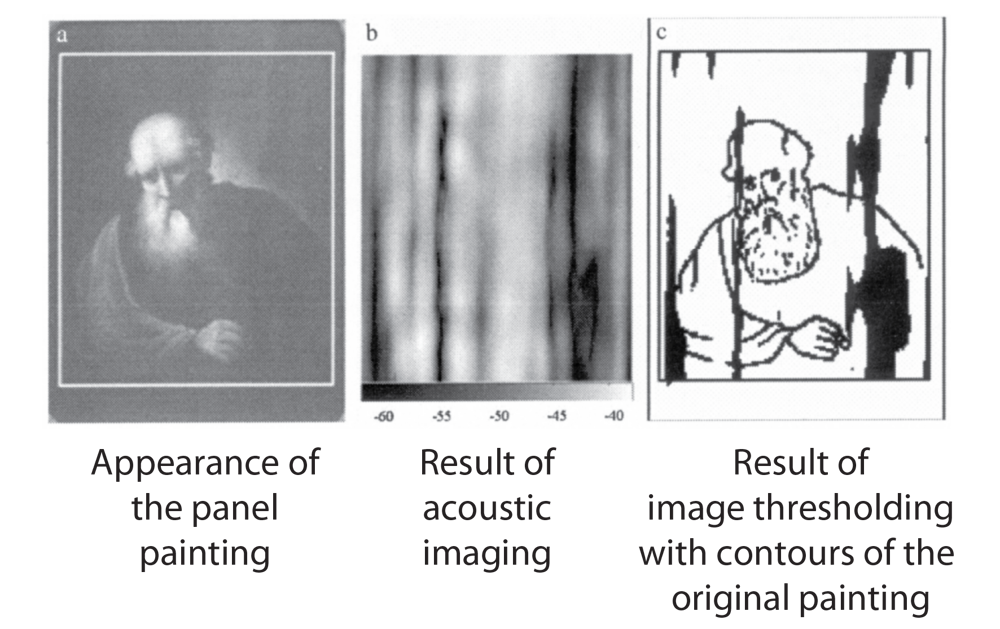Ultrasonic Imaging and Acoustic Microscopy
Many researchers report that defectoscopy of works of art is often performed by experienced conservators who use the finger-tapping. This requires periodic taps delivered to the surface of the artwork under analysis. An experienced expert is able to feel or hear if the region tapped contains a detachment under the surface and roughly estimate the severity of the defect. Needless to say this technique provides very approximate results and requires extensive training. The results of such analysis can hardly be documented.
This approach can be replaced by sound generators which deliver acoustic pulse to the surface of the sample, and register the echo pulse (in reflection mode) or the sound passed through the sample (in transmission mode).


Acoustic image can be collected in point-by-point manner, when the piece of interest is analyzed in a number of points. Dimensions of these points determine the resolution of the resulting image. Scanning acoustic imaging has been demonstrated to be a good defectoscopy method suitable for the search for detachments and voids in frescoes and panel paintings.
